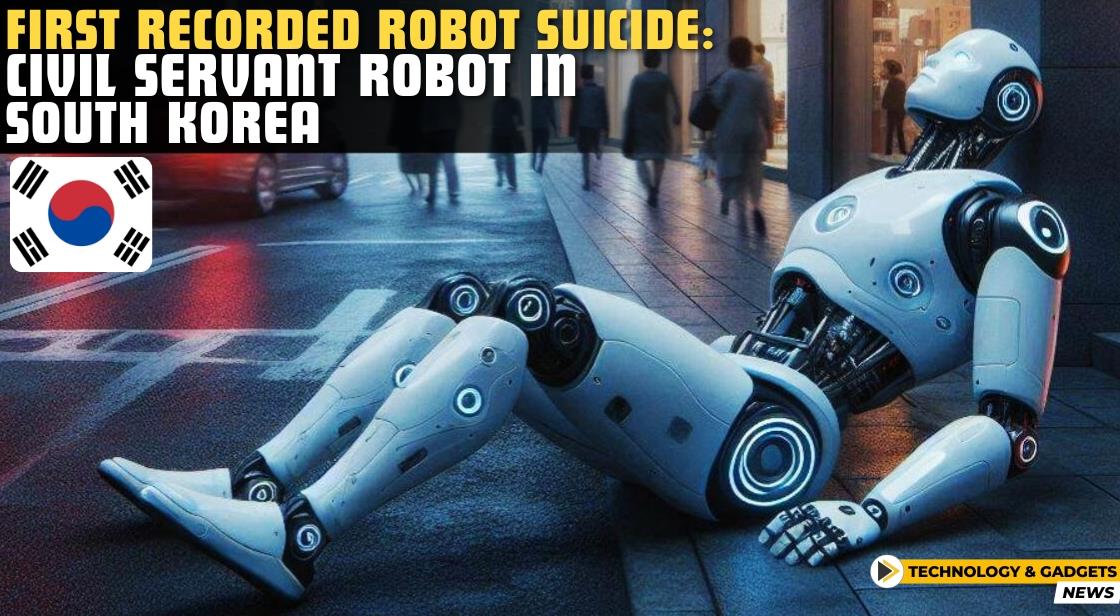First Recorded Robot Suicide: Civil Servant Robot in South Korea

News Synopsis
A robot civil servant employed by the Gumi City Council in South Korea was found inoperable at the bottom of a staircase on June 27th. While some news outlets sensationalized the event as a "robot suicide," the cause remains unclear and under investigation. This incident raises questions about the future of robot integration in the workplace and the potential need for safeguards to prevent similar occurrences.
Robot's Functionality and Daily Tasks
The robot, nicknamed "Robot Supervisor," was developed by Bear Robotics, a California-based startup specializing in service robots. It served as a valuable asset to the Gumi City Council, assisting with various tasks around city hall, including delivering documents, promoting the city through informational displays, and providing basic information to residents. Witnesses reported seeing the robot behaving strangely before the incident, circling in one spot "as if something were there." This unusual behavior adds to the mystery surrounding the robot's fall.
The robot had a standard workday, functioning from 9 am to 4 pm and even possessed its own employee ID card, signifying its official role within the council. It was programmed to operate elevators and navigate between floors independently, demonstrating a certain level of autonomy.
Public Reaction and Similar Incidents
The robot's fall has sparked debate online, with some netizens raising concerns about the potential exploitation of robot workers. Comments on social media platforms like X highlighted the need for considerations like worker unions for robots, emphasizing the importance of programmed breaks, simulated "vacations" for maintenance, and even potential "benefits" in the form of regular software updates and hardware upgrades.
This incident is not the first time reports of a "robot suicide" have surfaced. In a previous incident, a security robot nicknamed "Steve" working in a Washington building was found in a water fountain. However, investigations revealed the cause to be a technical malfunction - a loose brick caused the robot to slip and fall. This incident highlights the importance of thorough safety protocols and regular maintenance for robots, particularly those operating in dynamic environments.
Unanswered Questions and Ooing Investigation
The Gumi City Council is currently collaborating with Bear Robotics to analyze the robot's components in an attempt to determine the exact cause of the incident. Several possibilities exist: a technical malfunction, a software glitch causing the robot to misinterpret its surroundings, or even an external factor like an accidental bump from a passerby. The investigation's findings will be crucial in understanding how to prevent similar incidents in the future, especially as robot integration in workplaces becomes increasingly common.
This event serves as a reminder of the need for ongoing research and development in robot safety and programming. As robots take on more complex tasks and operate with greater autonomy, ensuring their safe and ethical interaction with humans becomes paramount.
Conclusion
The incident involving the robot civil servant in South Korea raises more questions than it answers. The investigation into the robot's fall highlights the need for a multi-pronged approach:
-
Technical Scrutiny: A thorough analysis of the robot's components by Bear Robotics will be crucial in pinpointing the cause – a hardware malfunction, software bug, or sensor failure.
-
Safety Protocols: As robots become more integrated into workplaces, robust safety protocols and regular maintenance become essential to prevent similar accidents.
-
Ethical Considerations: The public's reaction sparks a conversation about robot worker rights. While the concept of unions for robots might seem far-fetched, considerations like programmed breaks and regular software updates could be explored.
This event underscores the importance of responsible development and deployment of robots. As technology advances, ensuring the safety and ethical treatment of robots alongside humans will be a critical factor in fostering a harmonious future for robot integration.